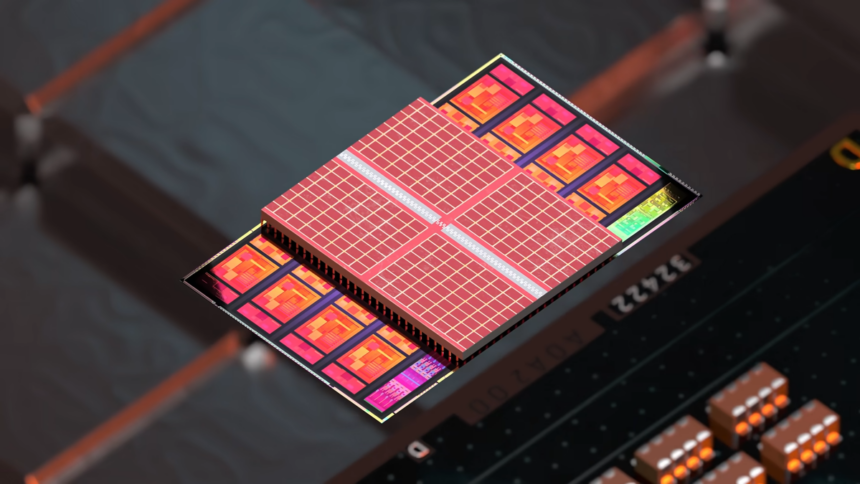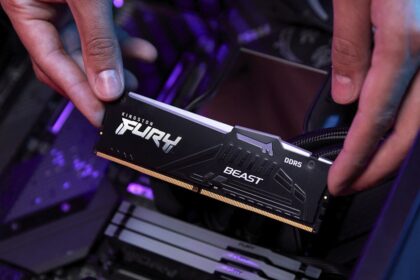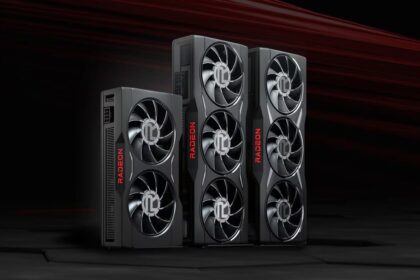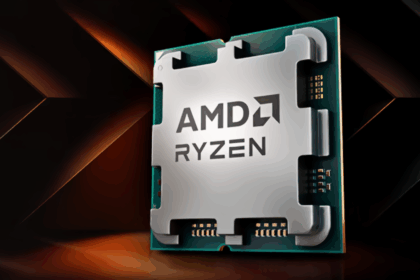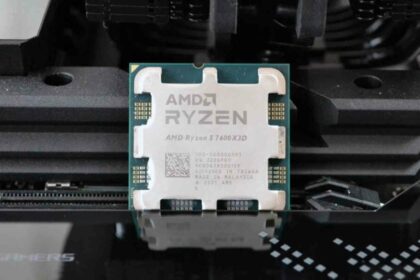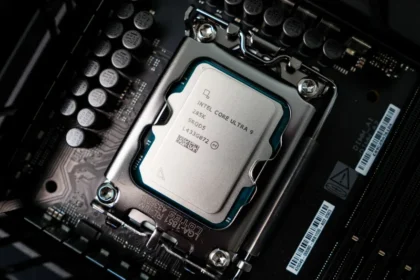In 2022, AMD unveiled the Ryzen 7 5800X3D, marking the introduction of its innovative 3D V-Cache technology. But what does this mean?
3D V-Cache is a unique method that allows AMD to increase the amount of L3 cache memory by vertically stacking these components within the CPU. This packaging technique is designed to enhance performance by expanding the L3 cache without increasing the overall footprint of the processor.
Typically, processors utilize the L3 cache in a horizontal layout. However, due to the limited physical space available for this component, AMD opted for a vertical arrangement, effectively stacking the cache layers on top of each other. This design optimizes space and boosts the efficiency and speed of data access in the CPU, resulting in improved overall performance.
What is cache memory?
At first glance, this wealth of information can seem overwhelming, but the concept is quite straightforward. Let’s break it down by first understanding a processor’s cache memory and why it matters.
Think of the processor as a computer’s brain, responsible for logical calculations. It reads, interprets, and processes data. To do this, the CPU must interact directly with RAM to retrieve instructions and information. However, this communication can be relatively slow compared to the CPU’s speed.
To tackle this issue, cache memory was introduced. This type of memory acts as a high-speed intermediary between the CPU and RAM. Cache memory stores frequently used data and delivers it to the CPU at lightning speed when needed, significantly improving performance.
You can think of cache memory like a nearby grocery store. Instead of trekking to a supermarket far away for essentials, it’s much more convenient to pop into the corner store to grab what you need quickly.
Having more cache can lead to noticeable improvements in specific scenarios, such as gaming, where quick access to data is crucial. However, it’s worth noting that while larger cache sizes offer benefits, they can also slow down communication speeds with the CPU. This means that the advantages of increased cache might not be as significant for tasks like rendering applications.
Cache Levels
To improve efficiency and minimize latency during data processing, cache memory is organized into three primary levels, each serving distinct functions:
- L1 Cache: This is the fastest cache available to the CPU but also the smallest, typically maxing out at around 1MB in the latest models. The L1 cache is divided into two parts: the L1 Data Cache, which stores data, and the L1 Instruction Cache, which holds instructions. Each CPU core has its own dedicated L1 cache.
- L2 Cache: This cache has a larger capacity than the L1 cache, reaching up to 32MB in modern processors. While it is slower than the L1 cache, it still provides quick access to data and helps reduce bottlenecks in processing.
- L3 Cache: As the slowest of the three, the L3 cache compensates with the largest capacity, often up to 64MB under typical conditions. It stores data the CPU accesses less frequently as a backup to the faster L1 and L2 caches.
By organizing cache memory in this tiered structure, processors can efficiently manage data access, balancing speed and capacity to optimize overall performance.
What is 3D V-Cache for?
Now that you understand how cache memory operates, it’s easier to appreciate the concept of 3D V-Cache.
Think of this technology as an innovative way to introduce an additional cache layer directly into the processor. As illustrated in the accompanying image, a new structure is added above the processor’s die, creating a “second floor” of the L3 cache.
The journey with 3D V-Cache began with the Ryzen 5800X3D, which was a significant success, particularly for gaming performance. Initially, the 5800X model already featured 32MB of L3 cache. With the introduction of 3D V-Cache, an additional 64MB was stacked vertically, resulting in a total of 96MB of L3 cache.
This setup allowed for impressive bandwidth, reaching around 2 TB/s while reducing latency in communication with the CPU. However, AMD had to make a few compromises. For instance, the cache and core voltages are tied together, so overclocking is not an option. Additionally, this technology can only be utilized in eight-core processors, restricting its application to just one model in the series.
The 2nd generation 3D V-Cache
With the release of the Ryzen 7000 series at the end of 2022, AMD introduced the Ryzen 9 7950X3D, Ryzen 9 7900X3D, and Ryzen 7 7800X3D. While the announcement of this new generation of 3D V-Cache didn’t generate the same excitement as its predecessor, the core concept remained unchanged.
What sets this generation apart is the integration of vertical stacking in processors with more cores. The 7950X3D boasts 16 cores, while the 7900X3D features 12 cores—both equipped with a substantial 128MB of cache. However, it’s important to note that the 3D V-Cache technology is not utilized across all cores. Instead, it operates on only one CCD (Core Complex Dies).
Specifically, stacking is available on eight of the 7950X3D’s 16 cores, albeit at reduced frequencies. The same principle applies to the 7900X3D, where six of its 12 cores are enhanced with the additional L3 cache, while the remaining cores function at standard speeds.

